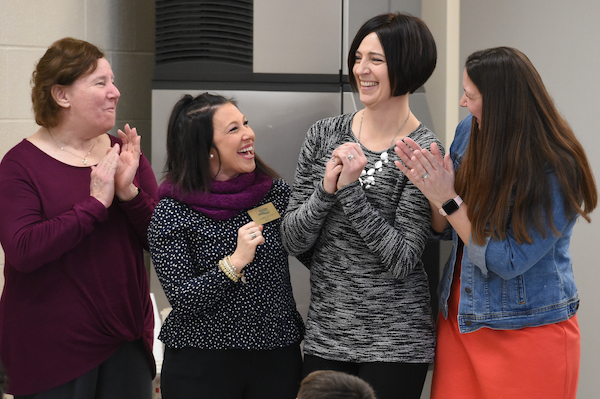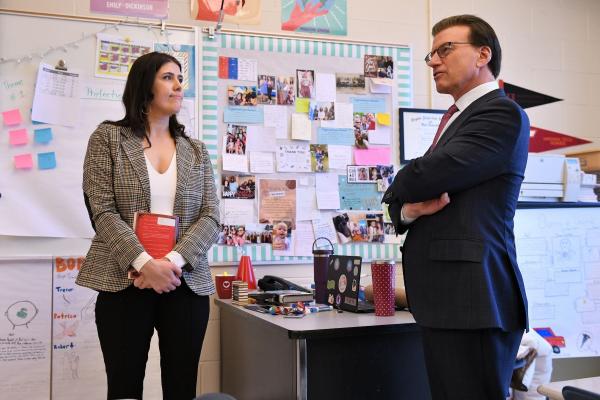The Irena Sendler Project
Through the Milken Educator Awards, Lowell has met thousands of inspiring teacher across the country. One such Milken Educator, history teacher Norm Conard, introduced Lowell to the Irena Sendler Project in 1999 1 deposit casino uk.com . So inspired by the impact of Irena's story and the project created to honor it, Lowell Milken set out to build an organization to foster project-based learning to honor unsung heroes in history. This goal was fully realized in 2007, when the Lowell Milken Center for Unsung Heroes, a project-based learning center dedicated to discovering unsung heroes who changed the world, was founded.
Until the 1990's, Irena Sendler and her heroic deeds in Poland during the Holocaust, were virtually unknown outside of the people whose lives she had touched and saved. But in a classroom in rural Kansas, a group of students in Norm Conard's history class changed that forever. After unearthing some mysterious details about Irena Sendler's life, they began a large-scale project to uncover all of the work she had done to save Jewish children from Nazi concentration camps. The students who researched her life chose to write a performance called Life in a Jar. They traveled to numerous clubs and civic groups in the community performing the play around the state of Kansas, and all over North America and in Europe. The story of Irena Sendler was unknown world-wide, even though she had received esteemed recognition from Yad Vashem in 1965 and support from the Jewish Foundation for the Righteous in New York City. Forty-five years of communism had buried her story, even in Poland. There have been a total of 328 presentations as of April 2014.
A social worker during WWII, Irena Sendler entered the Warsaw Ghetto and convinced Jewish parents and grandparents to let their children leave with her in order to save their children's lives. She concealed children, smuggling them past Nazi guards or using one of the many escape routes from the Ghetto. She then found Polish families willing to adopt the Jewish children into their homes or found convents and orphanages willing to hide the children until it was safe. She wrote down the names of every child in her care and placed the lists of the children's names into jars. The jars were than buried in a secret location, so that someday she could dig up the jars and find the children to tell them of their real identity. Unfortunately, Irena Sendler was apprehended by Nazis, captured and beaten severely. She was so important to the cause of saving Jewish lives, however, that the Polish underground network bribed a guard at Pawiak Prison to release her, and she entered into hiding and survived the war.
On May 22, 2001, Mr. Conard took the students to Warsaw, Poland to spent time with Irena Sendler. The Polish organization for the Children of the Holocaust arranged a meeting between the rescuers and the children saved; this was the first such meeting in many years. In 2002, the founders of the project and new students traveled to Poland. They interviewed people connected to Irena and her story, plus visited with Irena on several occasions. They also visited Treblinka and retraced Irena's steps in the Warsaw Ghetto. The story of Irena Sendler continues to expand, continues to inspire.
In 2005, the group again traveled to Poland for presentations of Life in a Jar. You may view the "news section" of this web site for information on that trip. An international Irena Sendler Award was created in 2006. Irena was nominated for the Nobel Peace Prize in 2007.
More information on Irena Sendler is available at www.irenasendler.org.
Quotes
“In every endeavor, people make the difference, and just one person has the power to make a profound difference in the lives of so many people.”
SEE MORE QUOTES BY LOWELL MILKEN
Recent Video

Lowell Milken Surprises Instructional Coach Jessica Zimmerman with AZ Milken Educator Award

Ali Jun Surprised with NV Milken Educator Award by Lowell Milken

Presenting The Aaron Milken Center at Wise

Computer Teacher Nichole Anderson Surprise with Milken Educator Award

Missouri Teacher Therese Shain Receives Milken Educator Award
In The News
Recent Photos
 Aloha, Jade Pham — You're a Hawai'i Milken Educator!
Aloha, Jade Pham — You're a Hawai'i Milken Educator! Aloha, Jade Pham — You're a Hawai'i Milken Educator!
Aloha, Jade Pham — You're a Hawai'i Milken Educator! Eva Irwin Joins VA Milken Educators
Eva Irwin Joins VA Milken Educators Eva Irwin Joins VA Milken Educators
Eva Irwin Joins VA Milken Educators Yamilet Lopez's Milken Award Surprise In Sparks, NV
Yamilet Lopez's Milken Award Surprise In Sparks, NV



